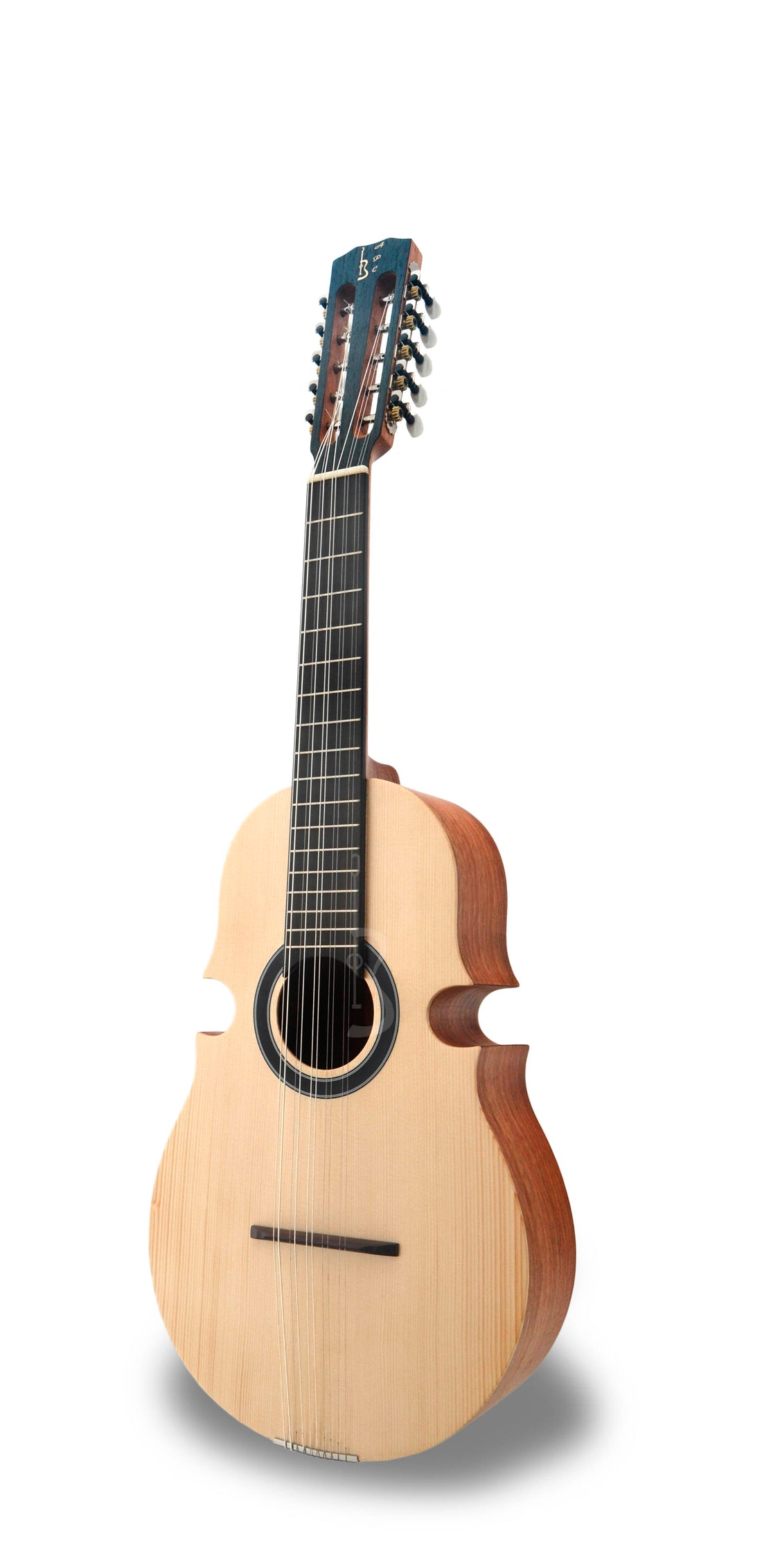Tres and Cuatro
by David Brown
The guitar was the companion of the Spanish as they colonized the Caribbean, and several regional variants developed over the years. From Cuba came the tres, a small instrument with 3 double-courses of strings. From Puerto Rico came the now 5-course cuatro. Each was originally associated with a regional, rural but sophisticated musical style with roots in Spain. Now both are used in other contexts, particularly in Salsa music.
The cuatro – as pictured in the image above – was the instrument of the jibaro (rural farmers), and also the name of the music they played on cuatros and guitars and guiros. It also was used to sing aguinaldos (Puerto Rican Christmas songs) from house to house. The instrument is sort of violin-shaped, more rounded like a guitar but with points at the inner bouts, like a fiddle. The bridge is a classic guitar type, but the instrument is steel strung and tuned from low to high B E A D G, with the B and E in octave pairings on the doubled strings. It is played with a flatpick and sounds like a cross between a 12-string guitar and a mandolin.
The Cuban tres originated in Oriente Province (the most eastern part of the island) and was the instrument of the guajiros (Cuban rural farmers). They kept the Spanish decima vocal style alive, as did the jibaros, but added African elements to produce the son (the Cuban music style that was the ancestor of salsa). A typical son conjunto was made up of a tres, a guitar, a bass, a bongo, maracas, clave and guiro, with the occasional trumpet.
The tres is notable for having three pairs of strings, once triple, now double, tuned with the central pair unison and the outside pairs in octaves. Two tunings are used; Gg cc Ee and Gg bb Ee, one making an open C chord and the other, one 1/2 step different giving an open E minor. Most playing is single line with limited use of double and triple stops, and employs a flatpick.
A tres made in a factory has a small body with a straight upper bout and often a classic guitar bridge, but with a tailpiece. Very often a small normal guitar is altered to be a tres, by changing the strings and adding grooves to the nut and drilling 3 extra holes in the bridge, sometimes adding a tailpiece. Often a student-size guitar makes a nice sounding tres for another reason. Many tres tops are plank (not quarter) sawn, and some of the cheaper guitars give a reasonable sound when made into a tres. However, a dedicated tres, designed as such with the proper top and bracing, gives a superior tonal color with enough projection to play with congas and bongos.
You can view Lark in the Morning's collection of Latin guitars here.

